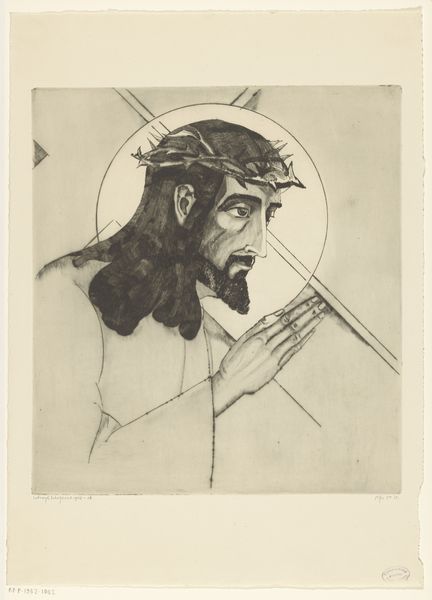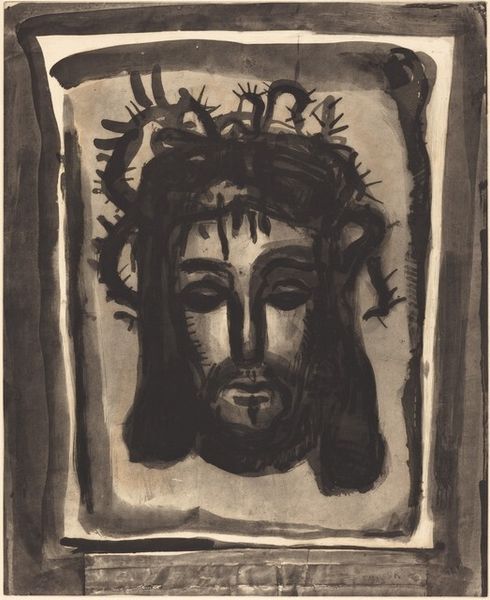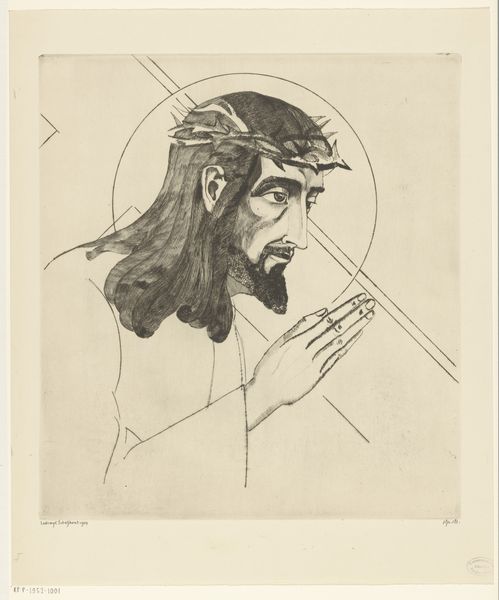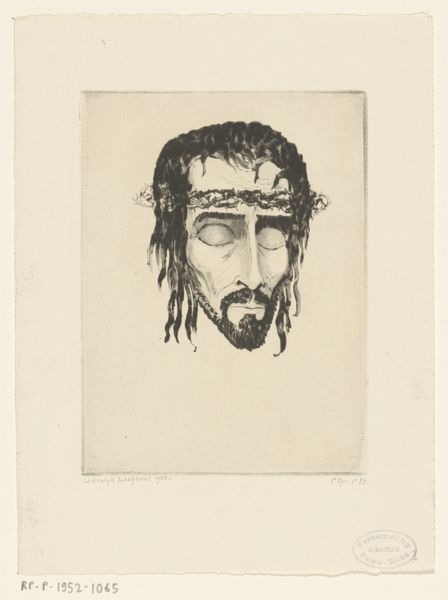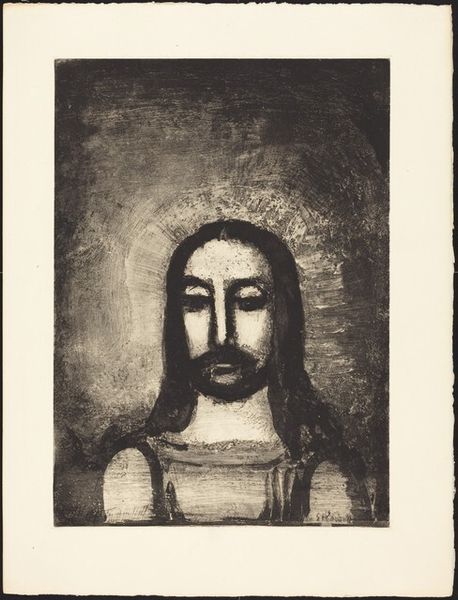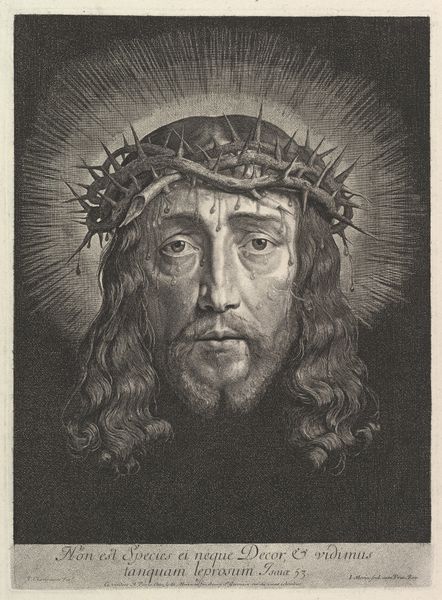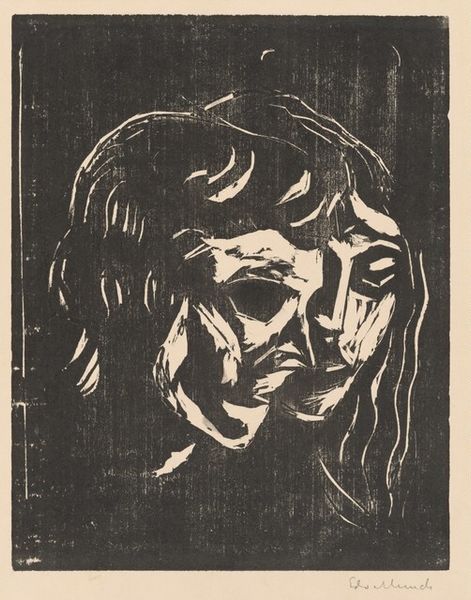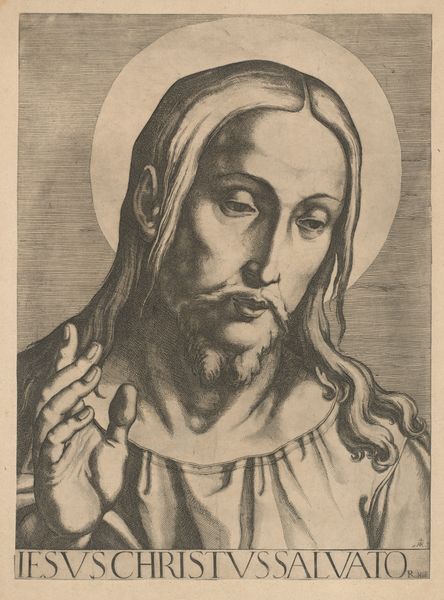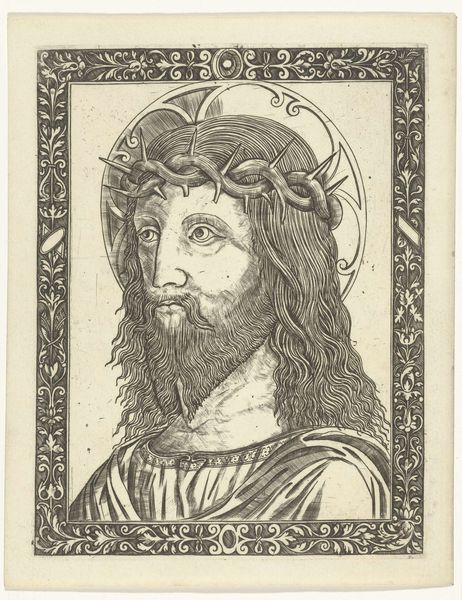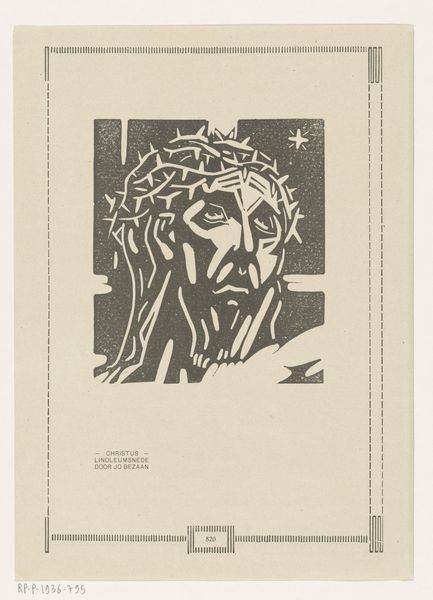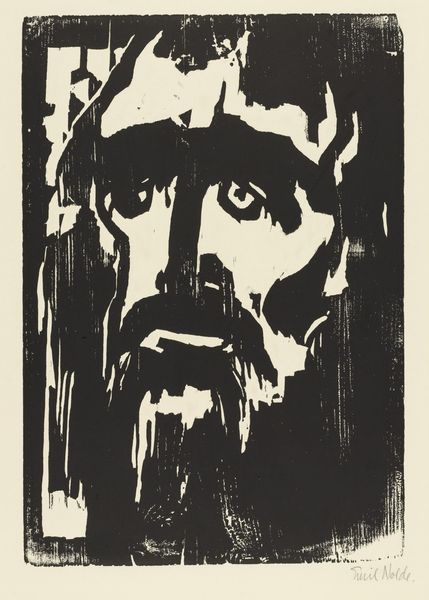
print, woodcut
#
portrait
# print
#
caricature
#
geometric
#
woodcut
#
abstraction
#
portrait drawing
Dimensions: height 275 mm, width 236 mm
Copyright: Rijks Museum: Open Domain
Editor: This woodcut print, titled "Christus," dates to before 1957 and is attributed to F. Meyneke. The stark black and white and very geometric features give it a powerful, almost confrontational presence. What stands out to you? Curator: The powerful graphic quality immediately strikes me. Its bold simplicity evokes early 20th-century Expressionism, a time when artists grappled with representing spiritual subjects in the face of societal upheaval. How does this stark representation of Christ challenge or reinforce traditional depictions you've seen? Editor: Well, most depictions are far more detailed, focusing on naturalism and conveying divine beauty. This is… different. More symbolic, maybe? Almost like a mask. Curator: Exactly. And this 'mask,' as you call it, invites questions. Considering the historical context, the aftermath of World War II and the rise of secularism, could this simplification be a deliberate act? An attempt to strip away dogma and connect with a more primal understanding of faith? Does the geometric abstraction push against established power structures? Editor: That's a perspective I hadn’t considered. It does feel less about religious authority and more about the human figure... but it also could be interpreted as dehumanizing, which seems like a strange choice. Curator: And it's that tension – between the spiritual and the abstract, the divine and the human – that makes it so compelling. It forces us to confront our own preconceptions about faith and representation. Think about other ways identity is shaped through graphic simplification. How might race or gender affect those visual choices? Editor: I see what you mean. Reframing it within those dialogues shifts the entire interpretation. Instead of just a religious image, it becomes a powerful social statement, or, perhaps, a set of questions about faith and identity. Curator: Precisely! Art is always in dialogue with its time. Recognizing those conversations allows us a much fuller understanding.
Comments
No comments
Be the first to comment and join the conversation on the ultimate creative platform.
